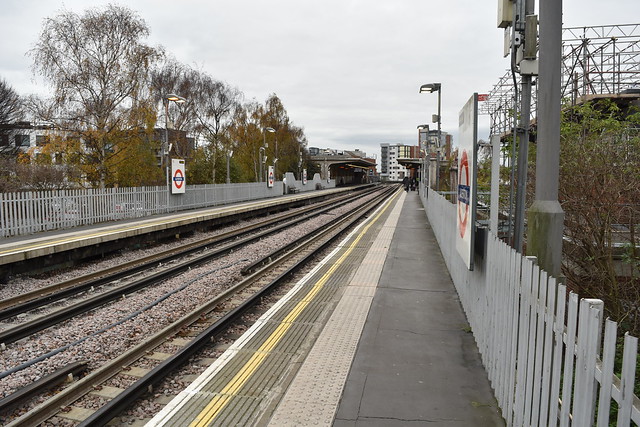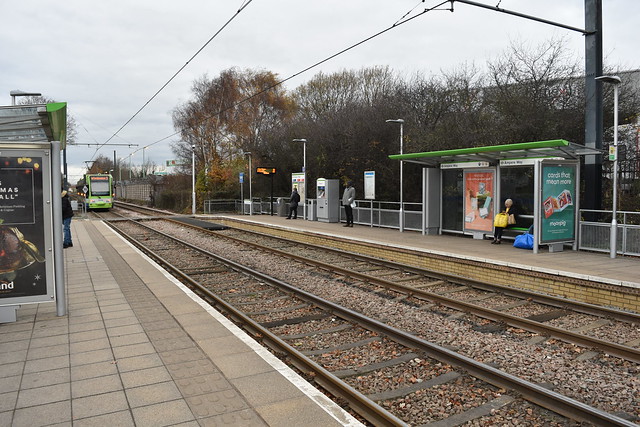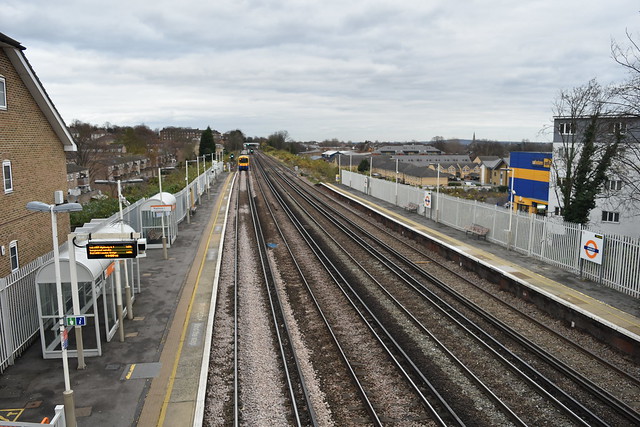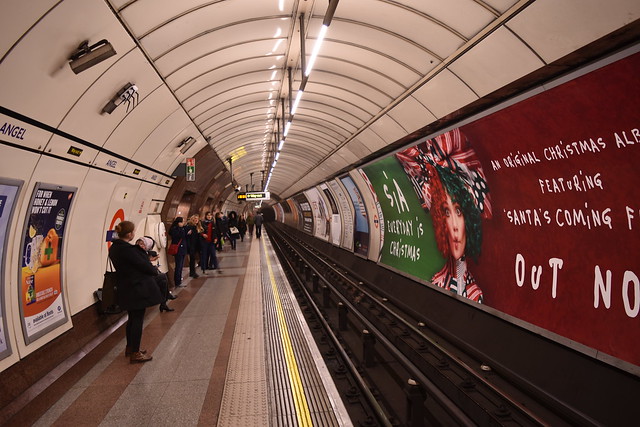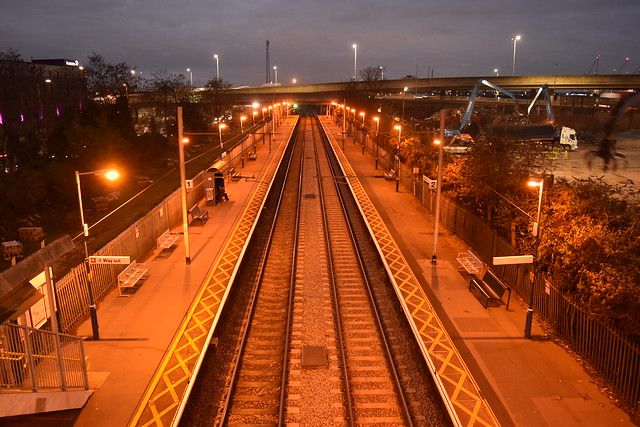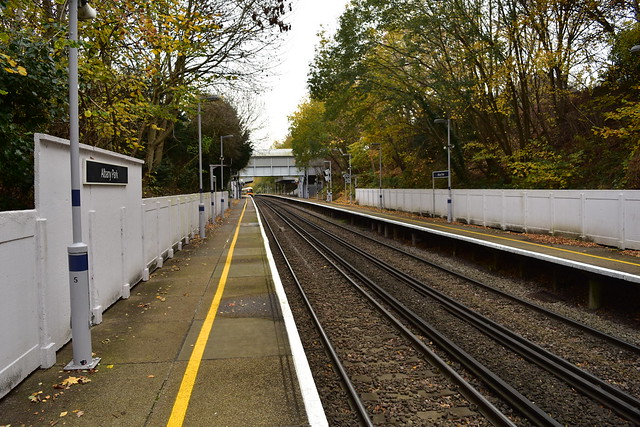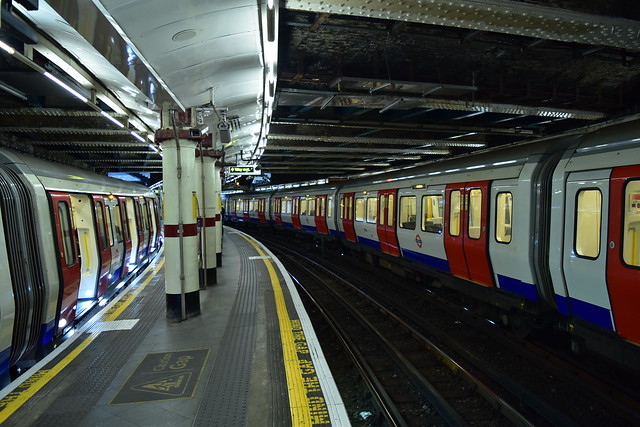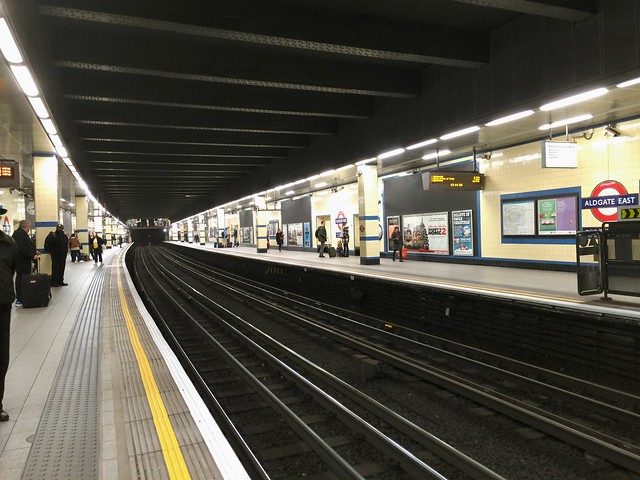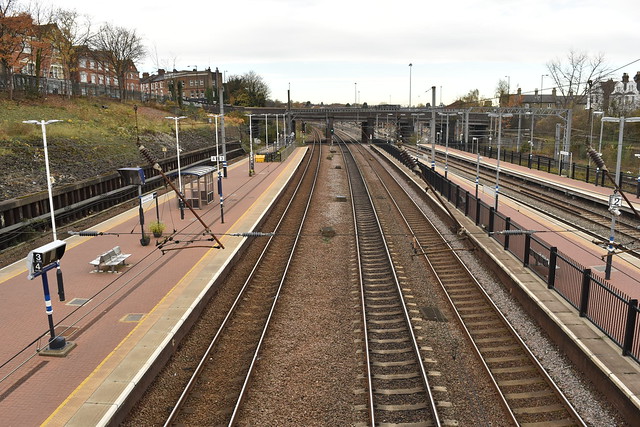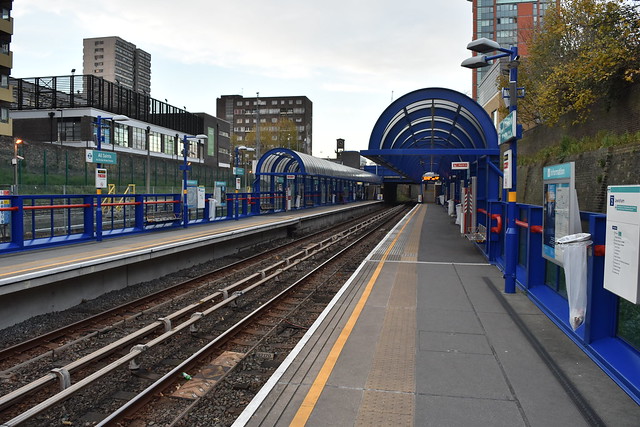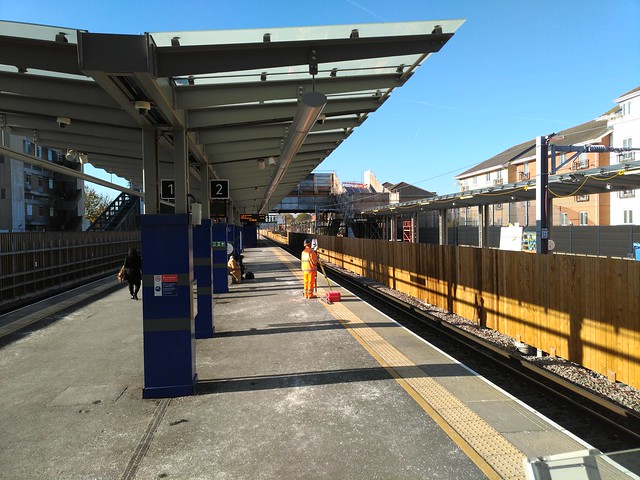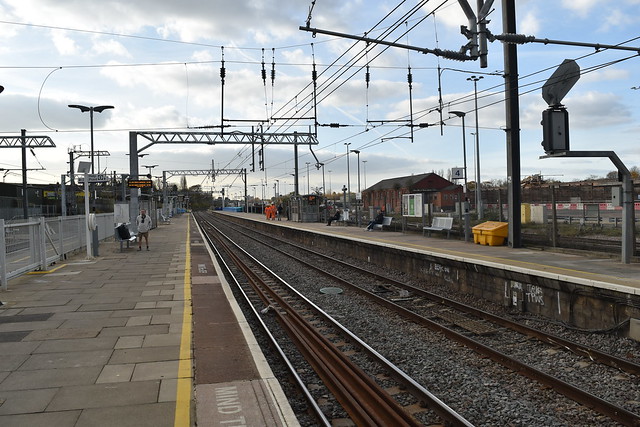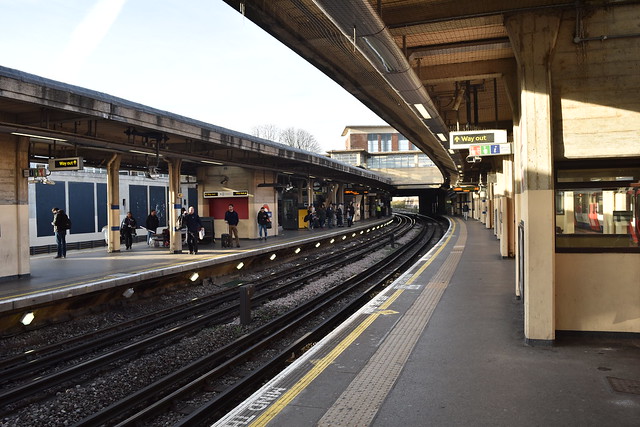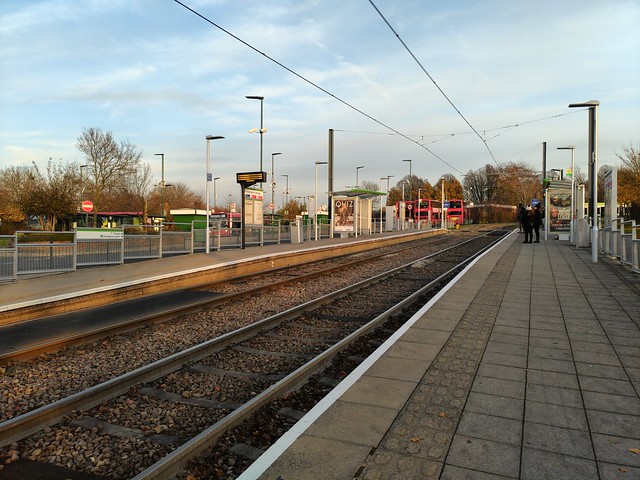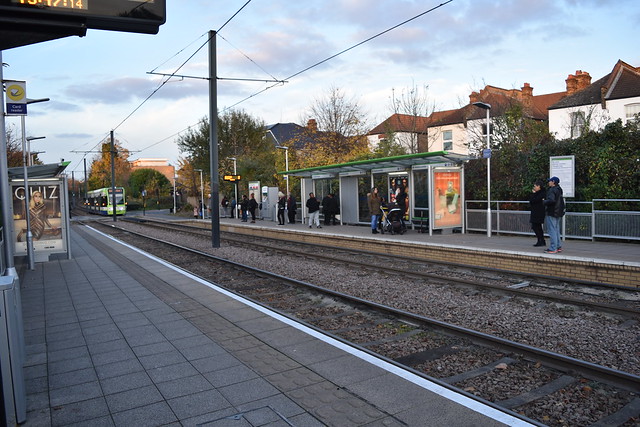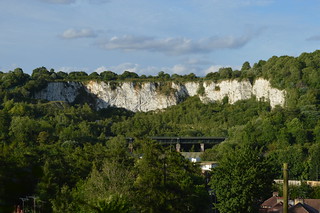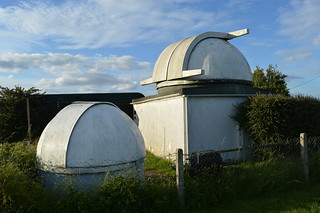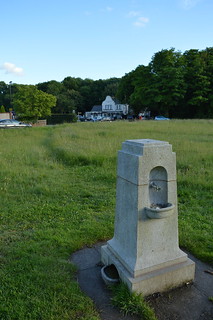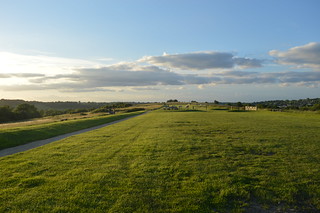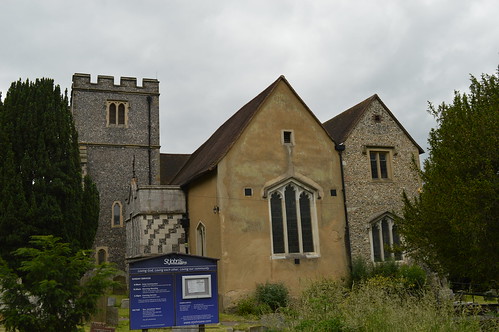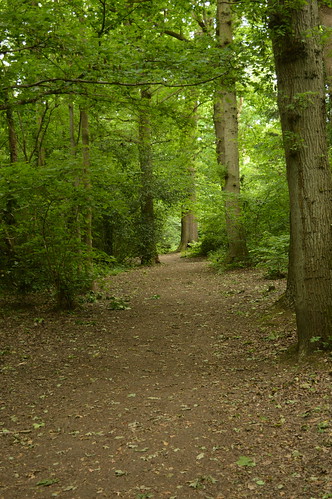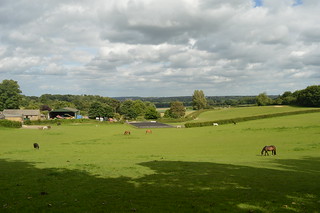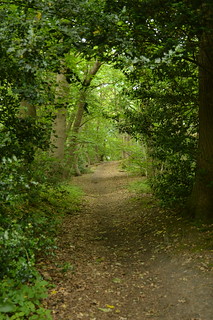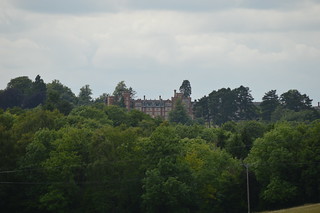I'm undertaking a project to visit all 598 Underground, Overground,
National Rail, DLR, Tram and Cable Car stations in Greater London in
alphabetical order. Here's Day 4.
A new year dawns! On the 6th day of this year of 2018, Travelling Man did go forth and take the train to Waterloo, then a Northern line service to...
Archway (ACY)
Station opened: 22nd June 1907 (confusingly as Highgate)
Railway opened: 22nd June 1907 (by the Charing Cross, Euston and Hampstead Railway)
Served by: London Underground Northern line
Zone: 2&3
Passenger entries/exits (2017): 9.28 million
Stations served:
- High Barnet (20tph)
- Kennington (10tph)
- Morden (10tph)
Archway is located on the Northern line, on the High Barnet branch. Opened in 1907, it was originally one of the northern termini of the Charing Cross, Euston and Hampstead Railway's (CCE&HR) line from Charing Cross. Upon its opening, the station was located in an area with no proper name attached to it, and so was initially named after the village half a mile up the road; Highgate. After a couple of name changes, the station was finally renamed just Archway in 1947, when the new Highgate station opened to the north (the deep-level station that is; Highgate had been in operation as a surface mainline station since 1867).
Today Archway is infamous within North London for a pretty horrible road junction involving the A1 and a much-hated gyratory system; or at least, it was. These days the Archway Gyratory is dead, replaced by a two way road system round three sides of the old junction; the fourth side has been pedestrianised and the whole thing at least looks a hell of a lot more pleasant than before. The tube station is located on the southern corner of this junction, sandwiched between a newsagents and a cafe, and overshadowed by the imposing Vantage Point tower. I'm going to be honest, the exterior of the station is nothing much to shout about, a bland grey box composed of narrow brick and what look like bitumen tiles; this is in the style of TfL's 2015 Palette apparently. The platforms however, are a much different prospect; these are original Leslie Green designs, with gorgeous deep green and cream tiling in abundance.
Descending back down to the platforms, I take a Northern line service to Kentish Town, where I change for a Thameslink service to take me south to East Croydon, changing once more onto a tram to take me to...
Arena (ARN)
Station opened: 23rd May 2000
Railway opened: 23rd May 2000 (by Tramlink, although on former trackbed of the South Eastern Railway)
Served by: Tramlink
Zone: Tram
Passenger entries/exits (2017): 0.396 million
Stations served:
- Beckenham Junction (6tph)
- Elmers End (6tph)
- Wimbledon (12tph)
Arena lies at a junction on the eastern end of the Tramlink network; straight on for Elmers End, or turn left for Beckenham Junction. The line was built over the former trackbed of the South Eastern Railway's extension of the Mid Kent Line from New Beckenham to Addiscombe, where it met the Woodside & South Croydon Joint Railway, running from Addiscombe to Selsdon. The name is one of the more literal on the network, serving the Croydon Sports Arena nearby, as well as a couple of nearby council estates. The station itself is a two platform affair, with a shelter on each and a smattering of Oyster readers. Access to the station is possible from either end of both platforms. Otherwise the station is as architecturally unremarkable as most of the stations on the Tramlink network. Clambering up the bank on the north side of the station allows one a fine view of South Norwood Country Park, with the tracks to Beckenham Junction curving to the north in the foreground and the Crystal Palace transmitter looming in the distance. I stand and watch a tram glide away to Harrington Road, then decide its time to move on.

Returning to Arena, I catch a tram back to East Croydon, where I change for a Southern service to Victoria. Descending into the Underground I take the Victoria line and head north to Finsbury Park, switching to a Piccadilly line service to arrive at...
Arnos Grove (ASG)
Station opened: 19th September 1932
Railway opened: 19th September 1932 (by the Underground Electric Railways Company of London)
Served by: London Underground Piccadilly line
Zone: 4
Passenger entries/exits (2017): 4.61 million
Stations served:
- Cockfosters (18tph)
- Heathrow Terminal 4 (6tph)
- Heathrow Terminal 5 (6tph)
- Northfields (3tph)
- Rayners Lane (3tph)
- Uxbridge (3tph)
Arnos Grove sits at the northern end of the Piccadilly line, sandwiched between Southgate and Bounds Green. Opened in September 1932 as the terminus of an extension of the Piccadilly line northwards from Finsbury Park, it remained the most northerly station for about 7 months, until the line was extended further to Oakwood in March 1933. The station name ultimately derives from the Arnolds, a Norman-era family who owned much of the land in the area, eventually including the woodland that gave the area its current designation. Arnos Park, the largest natural remnant of the Arnolds' estate, lies just to the north of the station, although the modern centre of the area is now generally considered to be centred around the western end of Bowes Road, where one will find the station.
Designed by Charles Holden (as were all the stations on the extension to Cockfosters), the station's dominant feature is the fabulous circular ticket hall. Constructed from simple brick and concrete, with high windows and a flat roof supported by a central column, the building is a consummate example of Holden's design principles and is quite frankly, superb. Set within the central column is a preserved passimeter, these days used to display information about the history of the station and its architect, rather than selling tickets. Down on the platforms the look is rather more functional, with concrete canopies and pillars interspersed by pitched glass skylights. Intriguingly the station has 3 tracks served by 4 platforms; the central platforms, 2 and 3, lie either side of a single track, which can be used as a through platform but is more usually utilised as a terminating platform, with a crossover immediately to the south allowing trains to run back towards London.

My next journey is a nice easy one, as I catch a Piccadilly line train 6 stops down the line, to...
Arsenal (ASL)
Station opened: 15th December 1906 (as Gillespie Road)
Railway opened: 15th December 1906 (by the Great Northern, Piccadilly and Brompton Railway)
Served by: London Underground Piccadilly line
Zone: 2
Passenger entries/exits (2017): 2.82 million
Stations served:
- Arnos Grove (3tph)
- Cockfosters (18tph)
- Heathrow Terminal 4 (6tph)
- Heathrow Terminal 5 (6tph)
- Northfields (3tph)
- Rayners Lane (3tph)
- Uxbridge (3tph)
Still on the northern section of the Piccadilly line, Arsenal is located between Holloway Road and Finsbury Park. It was opened with the opening of the Great Northern, Piccadilly and Brompton Railway (thankfully they shortened that down fairly quickly), as Gillespie Road. The station is notable as the only London Underground station named directly after a football team; in 1913 Woolwich Arsenal moved north of the river and dropped the Woolwich. Pressure over the following years gradually built up (aided supposedly by legendary Arsenal manager Herbert Chapman) until, in 1932, the station name was changed to Arsenal (Highbury Hill). The suffix lasted until 1960, when it disappeared from maps and signage, and the station was left with its current-day name. Arsenal FC have of course moved since, but luckily only a couple of roads over, and Arsenal station remains the closest station to the Emirates.
The station platforms lie under the East Coast Main Line, and were designed (as was the rest of the station) by Leslie Green. His characteristic tiling lines the walls, picked out here in salmon pink, dark brown and cream; the station's former name also appears in tile form. The platforms are linked to the ticket office via a long, sloping walkway; this is split in two by metal fencing, used on matchdays to segragate flows between football crowds and other passengers. The walkway eventually brings you to the comparatively small ticket hall; when initially constructed the frontage took up the equivalent width of just two terraced houses, and even when rebuilt in the 1930s only took over the space of an extra house.
I can't spend too long here; being in such close proximity to that stadium is making me feel dirty, so I head back in to the station, take the Piccadilly line down to King's Cross St. Pancras, change for the Victoria line to Victoria, change again for a Southern train to East Croydon, and finally change for a tram to...
Avenue Road (AVR)
Station opened: 10th May 2000
Railway opened: 3rd May 1858 (by the West End of London and Crystal Palace Railway)
Served by: Tramlink
Served by: Tramlink
Zone: Tram
Passenger entries/exits (2017): 0.062 million
Stations served:
- Beckenham Junction (6tph)
- Wimbledon (6tph)
Back on the trams, Avenue Road is situated between Birkbeck and Beckenham Road on the Beckenham Junction branch of the Tramlink network. The railway was originally constructed by the West End of London and Crystal Palace Railway as an extension through to Shortlands from the original southern terminus of Crystal Palace (Low Level) [now just Crystal Palace]. The National Rail line was singled in 1983, but the construction of the Tramlink network utilised the trackbed left behind to rebuild a single track line from Beckenham Junction through to Birkbeck and beyond to Harrington Road. Avenue Road is in fact the only one of the four stations on this single track section to have two physically separate platforms, with the station also acting as one of two passing loops on the section.
Unfortunately that's pretty much all the interesting things out of the way; the station itself is the usual carbon copy Tramlink station, with low platforms and the odd splash of lime green. The setting is resolutely residential, in the heart of terraced suburbia. There is some personal history here though; one of those terraced houses just down the road was where I spent many happy weekends with one of my grandparents, and we often used to take the tram from this quiet stop just for the fun of it. For that reason alone it's one of my favourite tram stops.
Darkness is falling, so I decide it's time to head home. Avenue Road is an appropriate place to finish on, given that it is the last station in London beginning with A! 1 letter down, 21 to go...



